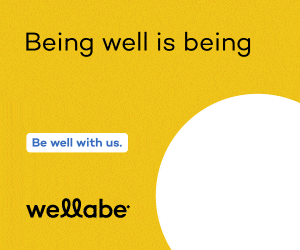Gold beats inflation, but don’t get carried away

Dear Mr. Berko:
Can you give me an example of how gold can be an inflation hedge? My adviser is as confusing as Alan Greenspan and uses all sorts of fancy language, difficult concepts and rows of statistics to show how gold is a hedge against inflation. Well, I do believe him, but I’d certainly be a lot more comfortable if you could explain it to me in words I can understand.
Our broker wants us to put 20 percent of our portfolio in Canadian and South African gold stocks as an inflation hedge, and we want to understand this concept before we take the first step.
D.K., Moline, Ill.
Dear D.K.:
I can provide you with a vivid, easy-to-understand example of how gold can (over the long term) protect you against inflation or “devaluation” of our currency. The following is a shortened, simplified version of some of the examples I’ve used in classes.
Our U.S. dollar is supposed to be a nationally accepted standard of value. In other words, a $10 bill will purchase 10 pounds of sweet potatoes, three gallons of milk and about two cans of red sockeye salmon in Maine, as well as the same quantity of items in California, 3,000 miles away. Our dollar is also supposed to be a storehouse of value, meaning that this $10 bill (in a perfect economy) also should purchase 10 pounds of sweet potatoes, three gallons of milk and two cans of red sockeye salmon five years from now. However, we know too well that five years from now we might need $12 to buy those items.
But let’s assume that the year is 1930 and you are considering the purchase of a new Ford automobile. It has a stick shift, manual windows and a four-cylinder engine that gets 25 miles per gallon, and this beauty, which only comes in black, will cost you $600. The dealer wants to make a sale and write up a contract. You ask him to prepare the papers and promise that you’ll return tomorrow with $600 in cash. Remember, in 1930 banks did not offer eight-year auto loans, it was blasphemous to even dream of adding the cost of a car to your home mortgage, and most Americans paid cash for their purchases.
Upon reaching home, you’re having a very difficult time deciding whether to give the dealer 30 bright and pretty $20 gold pieces or 30 dirty, green $20 paper bills. Because you need to think on the two alternatives, you put the $20 gold pieces and the double sawbucks under your mattress and decide to sleep on it. So sleep on it you do, and you pull a Rip Van Winkle, waking today, in 2005, from a 75-year snooze.
Now, with your mind made up, you bebop over to that Ford dealer with paper currency to give him $600 in green. Guess what? Today those $20 bills will only buy four tires and rims for a 2005 model. However, your 30 $20 gold pieces will buy the whole enchilada. The dealer would gladly sell you a spanking-new red Ford (with air conditioning, power brakes and steering, a radio, turn signals, soft seats, chrome molding, pneumatic shock absorbers, tinted windows, seat belts, etc.), take your 30 double eagles, and mark the contract “paid in full.”
Now, I would not invest 20 percent of your portfolio in Canadian and South African gold stocks for reasons of trust. I don’t trust South African or Canadian gold companies. I don’t trust the South African and Canadian executives who manage those companies. I don’t trust South African or Canadian gold miners, and I certainly don’t trust the accounting firms that review the books of the South African and Canadian companies. I have similar feelings about U.S. gold mining stocks.
You must be mindful that selecting a portfolio of seven or nine gold stocks is not a pennyweight less difficult than selecting a portfolio of biotech or software stocks. And I’m willing to wager that you’d lose money on your broker’s gold stock picks. Frankly, I think you have to be dumb to put 20 percent of your assets in gold mining stocks.
However, if you must, I suggest that you consider iShares Comex Gold Trust (IAU-$42.96), which is an exchange-traded fund. Each IAU share represents one-tenth ounce of gold and the share price moves in tandem with the minute-by-minute changes in the price of gold. So, a purchase of 500 shares is equal to owning 50 ounces of gold. I think this is preferable to owning gold stocks and having to concern yourself about the accuracy of geologists’ reports, the costs of mining the metal, management goofs and the lifespan of the company’s gold deposits.
Please address your financial questions to Malcolm Berko, P.O. Box 1416, Boca Raton, Fla. 33429 or e-mail him at malber@adelphia.net.







